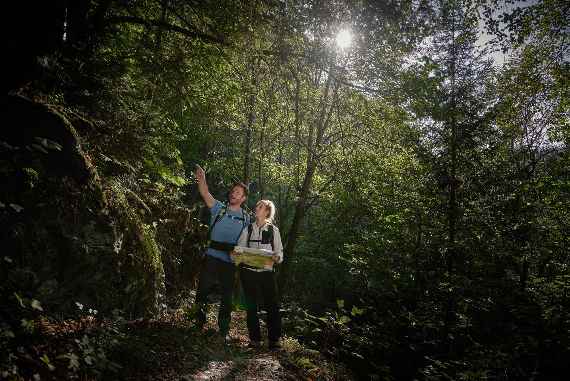Leisure-time activities have changed considerably in recent years.
Whereas in the 1950s forests saw hikers in check shirts today mountain bikers jet up the mountains, para-gliders fly over the tree tops and geocachers search for treasures.
In winter snowshoe hikers and tourers stomp in the snowy green and off-piste skiers make their tracks through the forest.
These recreational uses occupy large parts of the wildlife habitats and the workplace of forest management both during the day and at night. This may cause stress with animals and with humans. Red deer, roe deer or capercaillie hardly find areas for retreat and need a lot of energy when fleeing. Therefore they will browse young trees and gnaw on barks. Moreover forest work and timber transport are becoming more difficult.
The desire for freedom off the tourist paths brings unrest all the way up to the highest protective forests.
In order to protect the forest ecosystem optimally and sustainably the Federal Ministry of Agriculture, Forestry, Regions and Water Management has created a list of important rules of conduct for those visiting forests.
The respect for forest work and for the need of wild game for rest especially in winter as well as the awareness of risks like forest fire and elementary processes are crucial for a good coexistence in Protective Forests.

